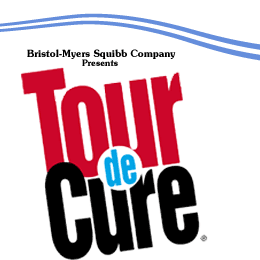 |
Communications Support for the American Diabetes Assn. Tour de Cure Zebulon to Manteo May 5/6, 2001 |
 |
 |
Communications Support for the American Diabetes Assn. Tour de Cure Zebulon to Manteo May 5/6, 2001 |
 |
| Operating Procedures |
| Traffic on the repeater can get very busy, so, here's how we'll handle
it and keep things moving, including emergency
prodecures.
NET CONTROL: All communication should begin with a call to or from Net Control. The channel can quickly become too busy for calls initiated directly between stations. This will seem wasteful at first -- why not just let stations call each other? But you'll soon see how stations would be falling all over each other to use the channel if there were no control. We will sometimes have calls stacked three and four deep waiting to use the repeater. If two operators are in simplex range of each other, or can use another repeater, Net Control may move them off the main repeater if they have extended traffic. We've designated 147.42 as the group simplex channel, trying to avoid rag-chews on 146.52. Please check the frequency plan and have all the main and auxiliary channels programmed in your radio. 3RD PARTIES: All traffic is tactical (just direct or verbally relayed messages). There's no formal message traffic. Most of the time the person receiving the message is standing right at the radio, listening. Sometimes we have the ADA volunteers and officials talk directly to each other. When we do this, we must be careful to avoid doubling and channel-hogging. TACTICAL CALLSIGNS: We try to use them exclusively, avoiding our amateur callsigns except for legal id. To keep your station legal, just quickly drop your callsign in at the end of a completed exchange (there's an example below). We have noted the tendency of stations to forget legal id once things get hot and heavy, and tactical id works well. Net Control should help everyone remember to id properly. Try to keep the rest of the amateur jargon and pro-signing to a minimum, because of the amazing variety of interpretation the words can have. Here's a brief example of a typical exchange, with legal ID:
EMERGENCIES: on a tour this long and with this many bikes, we expect a couple of medium emergencies. Typically the worst is a broken collar-bone, which occurs when a rider gets thrown over his handle bars. That's most often caused by contact between bikes that are riding very close together. Bike-car accidents are very rare. Sometimes SAGS will come upon an accident. More often, a SAG is waved down, or a report comes in to a rest stop reporting an accident. If you are the first station to witness or receive a verbal report of an accident, break in with the words: EMERGENCY, this is (give your tactical call) All other stations immediately stop transmitting. Net Control acknowledges the emergency station and tells you to go ahead. Give Net Control the best location of the emergency that you can, and a concise description of the problem. Then stop transmitting, and wait for Net Control' s instructions. There is a doctor with a radio operator on the route (Tactical Callsign: DOCTOR), and there are medics at some rest stops. The doctor, and the ADA coordinators will determine how to respond to the emergency. There are several ways this might be handled, but for a report of a
serious emergency, this is typical:
SAG OPERATORS:
We're out on quiet, country back roads with few landmarks and sometimes many miles between intersections. Keep constant track of your location using the route map. If you come upon an accident, you don't want to mis-direct an ambulance, or waste precious minutes verifying your location. Keeping careful track of your location at all times can get tedious, but it is so important. All turns are numbered, and they are probably your best tool to identify your location to Net Control. |